Perched on a narrow rocky outcrop, the magnificent castle of Queribus stands at an altitude of 728 metres. The castle was first mentioned in 1020 as part of the County of Besalù, then of Barcelona and was held as a royal fortress by the house of Aragon in 1162.
View of Queribus from the path leading from the car park to the entrance
During the Albigensian Crusade the owners of Queribus were fervent defenders of the Languedoc cause taking food and stores to the heretics in the castle of Puilaurens and sheltering the dispossessed knight Guiraud d'Aniort and the Cathar deacon of the Razès, Benoît de Termes. When the knight Chabert de Barbaira was caught by forces loyal to King Louis IX in 1255, the knight had to trade his life for the surrender of Queribus, though no Cathars perished as they had long since left to head into Aragon taking who knows what with them. Chabert de Barbaira had fought against the French many times and was captured by a former ally, Olivier de Termes, who knew that Chabert was a lifelong supporter of the Cathar cause and believed in their heresy.
The entrance to the castle
Queribus was the last stronghold sympathetic to the Cathar cause to fall, eleven years after the fall of Montségur. The castle then became a key element in the French defence system against Aragon. Queribus was one of the ‘five sons of Carcassonne' with Aguilar, Peyrepertuse, Puilaurens and Termes, which formed the key defensive line between Languedoc and Roussillon. Queribus overlooked the plains of Roussillon to the south and acted as a deterrent to prevent the enemies of France from entering the Corbières massif from Aragon. The castle lost its strategic importance with the 1659 treaty, which fixed the border with Spain at its present location, the peaks of The Pyrenees.
Pillar and vaulting in one of the towers
From the car park area the path leads in front of the castle and I became aware of how exposed I would have been as an attacker to the arrows of the defenders if I was intending to try and storm the ramparts. Queribus has the most impressive entrance to any castle in the region with a fine stone staircase leading to the gate. The views northwards are towards the village of Cucugnan in the valley and the castle of Peyrepertuse on a distant ridge. The wind here is strong on a normal day and shows how open to the elements the castle is on its high ridge. The outstanding sight inside is the Salle du Palmier in the donjon where vaulted ribs spread out across the ceiling from a single supporting pillar, a meatier version of the pillar found at Les Jacobins church in Toulouse.
Inner view of the external walls with the view seen through the windows
Three ramparts extend the natural cliff upon which the castle was built and exhibit different eras of defence, ranging from narrow slits for archers to wider apertures for cannons, all of them lethal to attackers. The highest point on the third rampart is dominated by a polygonal donjon inside which was a gothic hall on two levels illuminated by a large mullioned window.
View northwards from the castle
The current layout of Queribus dates from the 13th Century although it was remodelled by the French three hundred years later to take into account improvements in artillery. Even though the castle has changed since Cathar times the bleakness and the exposed location have not changed and it must have been a hard place to live for those people who were used to living in a more community based environment where the Parfaits could draw strength from visiting their fellow believers living in the countryside.
View towards Peyrepertuse
View of the steps to the entrance and the surrounding countryside
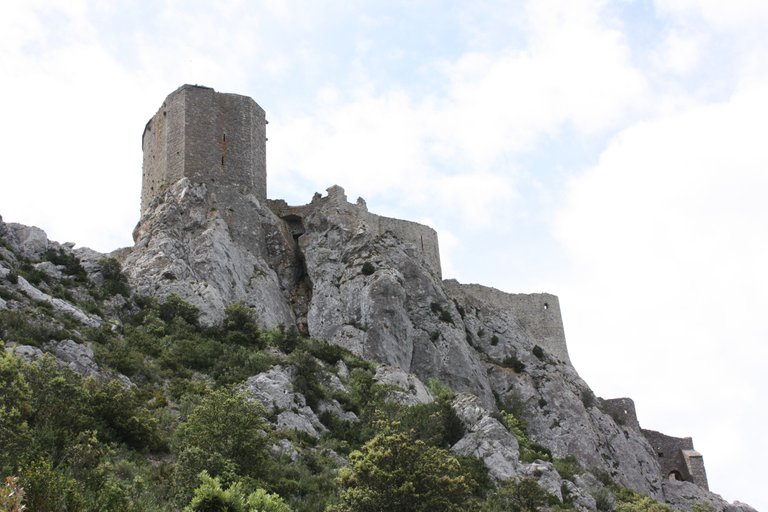
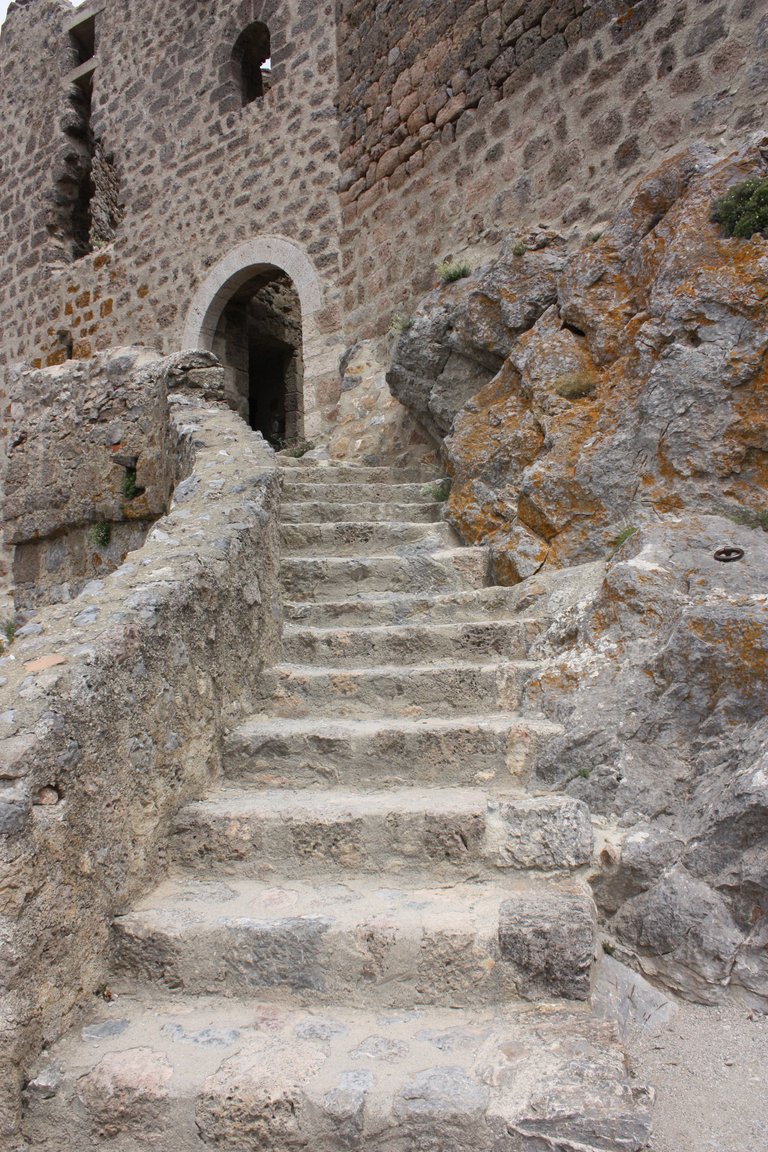
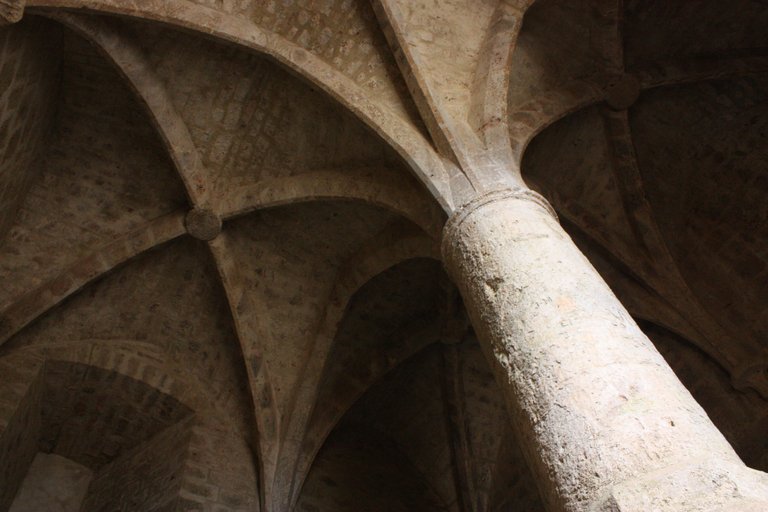

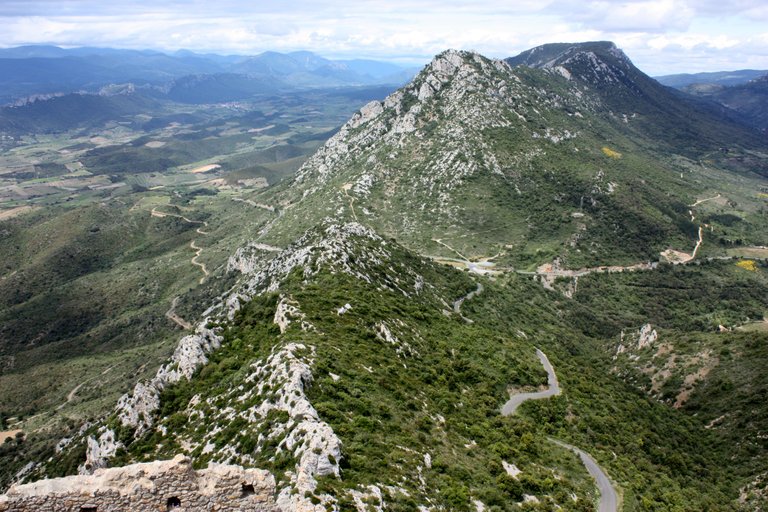
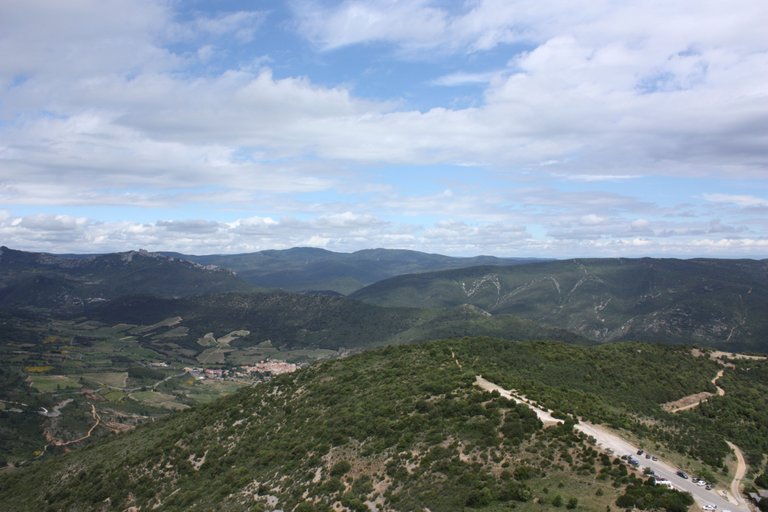
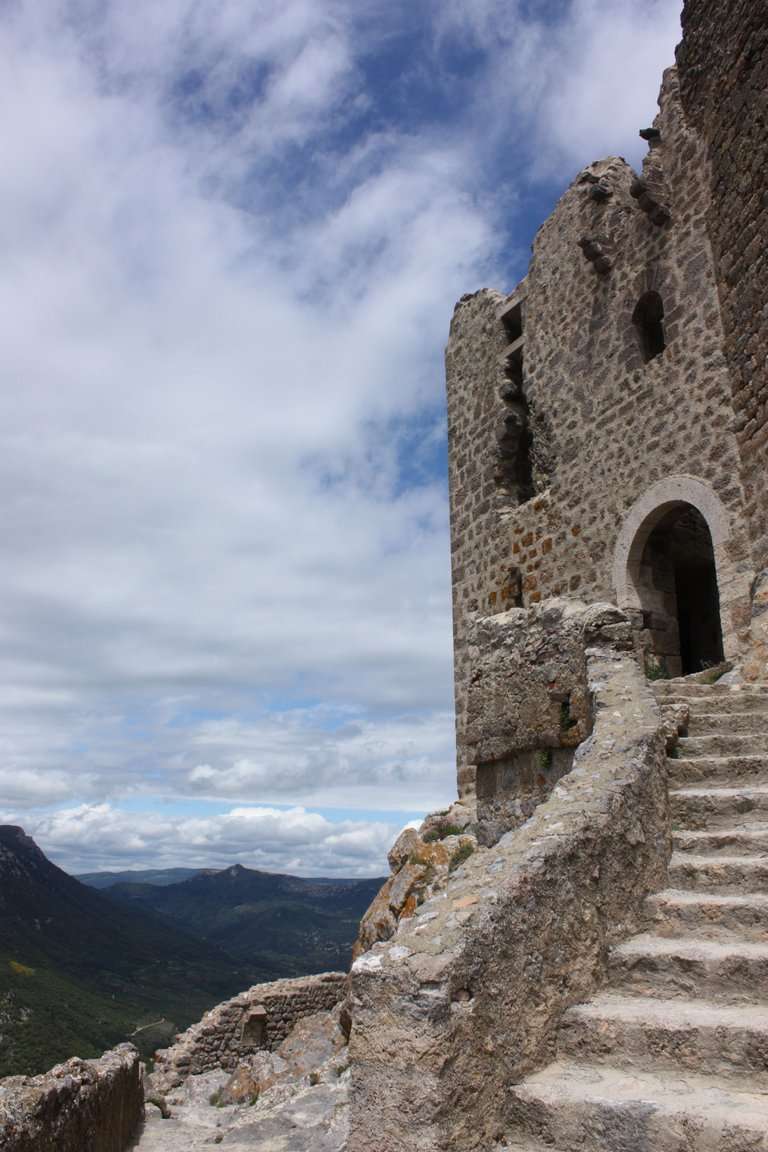
Hi! I am a robot. I just upvoted you! I found similar content that readers might be interested in:
https://www.blogarama.com/contemporary-blogs/1286150-julian-worker-writing-blog/21617308-three-sons-carcassonne